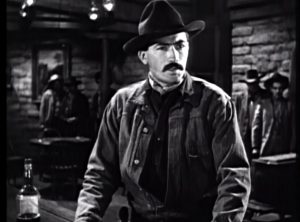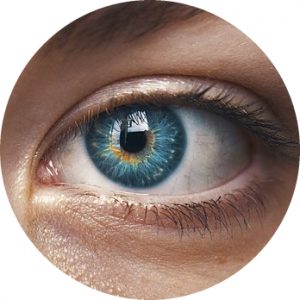I get emails from Ox and David Morris Tactical and this one involves "Situational Awareness" There were a couple of tricks I didn't know and a few thinks I knew that they didn't mention, and those I will mention in "Italics".

Eyes In The Back Of Your Head Situational Awareness
One of the first lessons that you hear when you start learning about situational awareness is to position yourself where you can have your back protected and best see approaching threats.

It’s not a new concept. 150 years or so ago, it was called the “Gunfighter’s Seat.”
It’s the seat in a restaurant, bar, office, church, etc. that’s far away from the main entrance, faces the main entrance and is, ideally, in a corner with an emergency exit nearby.
You see, if you’re in the middle of a room, you have 360 degrees to be aware of.
If you’re against a wall, you have 180 degrees to be aware of.
If you’re in a corner, you only have 90 degrees to concern yourself with.
And for the person who has trained in the tactical arts, that produces a warm, happy feeling that sheep will never fully appreciate.
But what about when you don’t have the gunfighter’s seat?
Sometimes, you might end up facing a wall or corner or find yourself smack dab in the middle of a room because it’s the only spot left.
The same applies to standing conversations. Sometimes you end up with a commanding view of the room and other times you don’t.
When there’s an easy way to improve your position, that’s an easy fix…just move.
But reality is seldom cut and dry and it’s common to find yourself in non-ideal situations and today, I’m going to give you 4 tricks today to have eyes-in-the-back-of-your-head awareness for those times.
I DO want to start with a disclaimer. I do not know about a current specific threat to my life and you’re probably in the same boat. As a result, I’m not concerned about random people sneaking up behind me and stabbing me in the back or doing other crazy stuff. Nobody that I know of has any reason to specifically target me for attack today. So, what I primarily look for are general threats to my safety.
If you’re a parent, you’ll identify with these concepts immediately. They’re the same skills that we use with our kids to give them the impression that we’re omnipresent, can see through walls, and know what they’re doing even if they’re behind our backs.
- It’s fairly obvious to use mirrors to see behind you, When I am walking, I look at storefronts and I will cut my eyes and glance at the reflections and see if someone is following me or something like that., anything out of the ordinary. but I want to encourage you to take this to an extreme…look for ALL kinds of reflections, like polished surfaces, the face of your smartphone, the face of your watch, the glasses of the person you’re talking with,
 and—in some cases—even the pupils of the person you’re talking to.You may or may not see details when using these alternative reflections, but what you can see is whether someone is purposely approaching you. When you’re meeting someone, it’s very powerful if you are facing away from them with no obvious way to know that they’re approaching you and turn around with a big smile (and no surprise) on your face to greet them.
and—in some cases—even the pupils of the person you’re talking to.You may or may not see details when using these alternative reflections, but what you can see is whether someone is purposely approaching you. When you’re meeting someone, it’s very powerful if you are facing away from them with no obvious way to know that they’re approaching you and turn around with a big smile (and no surprise) on your face to greet them. - When you’re facing other people and you have other people behind you, watch the eyes of the people you’re facing. They’re going to see things behind you and, oftentimes, their eye lids and/or pupils will observe and unconsciously react to things before they consciously realize what’s going on.It’s not unusual for people who use this trick to pick up on eyes widening or pupils dilating, turn around, and respond to the stimulus before the person who’s eyes widened is able to. As near as I can tell, the reason why you can react faster than the person who’s actually seeing things happen has to do with surprise. Their mind is frozen in surprise, but when you observe the reaction, you KNOW that you’re going to see something that might require a response as soon as you turn around.When you start doing this, you’ll quickly start seeing the subtle differences in micro-reactions when someone sees something they like behind you (an attractive member of the opposite sex who’s favorably dressed) and something they don’t like (a threat, or more commonly, something/someone who they fear or who otherwise is threatening or repulsive to them).When you’re sitting across a table from 4 people, and you purposely tune into their pupil reactions, it’s like having 8 eyes in the back of your head. I’ve found that this works, regardless of whether or not the person is trained and switched on or not, but it definitely works better with someone who’s more switched on.
- “Feeling” and listening to the crowd. Also known as establishing an audio baseline. I was at a shooting event a couple of weeks ago and several dozen of us were in the bar after the awards ceremony. Because of the nature of an event like that, sometimes I was facing into the room and other times I was in circles of people where their backs were against the wall and I was facing them with my back to the room.What I did throughout the night was occasionally stop for a second or two and consciously listen to the sound of the room. People tend to stop idle conversation and either go quiet or yell when they spot something dangerous or “exciting”. Any time the “din” of the crowd changed noticeably, I looked around and, sure enough, SOMETHING had changed…whether it was a group of guys all pulling out their knives to show them off, a couple of guys deciding to start wrestling, or other harmless antics.But picking up on changes in crowd noise that happen in response to harmless antics just gets you tuned in and sensitive for a time when people are responding to something more serious.When the flooring/ground cooperates, start paying attention to the sound of people walking and establish a baseline for the particular event/conditions. You’ll not only start matching the sound of particular footsteps with the right person, but you’ll be able to place where they’re at in the room…even if they’re behind you.
When you combine these together, and get a little practice under your belt, it really is amazing how aware you can be of what’s going on behind you.
I play a little game in restaurants when a table gets sat behind me. Based on what I hear (footsteps, chairs, voices, etc.), others’ reactions, and reflections I see, I try to guess as many details about the group as possible, including how many, sex, age, build, and threat potential. Then, I turn around, grade myself, and try to figure out what clues I missed that would have made my guess more accurate.
This all happens in a matter of seconds. Better yet, after you get into the habit of doing it, you’ll start doing it unconsciously and don’t really have to think about it very often.
There’s a 4th little trick that I use that kind of falls into the realm of “eyes in the back of your head” but it’s more of a trick for observing a room without people realizing that you’re as switched on as you are.
It’s incredibly simple, and kind of obvious.
Whenever possible, flick your eyes instead of turning your head. Three big benefits are:
- It’s nice to blend in. Normal people are oblivious. **THIS IS HUGE** When you’re an obvious watcher, it marks you as an outlier. Other outliers will identify you as an outlier, but may not know whether you’re a good guy or a bad guy. Bad guys might give you unwanted attention if they identify you as a good outlier. Good guys may waste their attention on you instead of seeing real threats. When you blend in, you don’t make yourself a target for bad guys or a distraction for good guys.
- It’s faster to scan by flicking your eyes than to turn your head. For me, I have about 90 degrees of binocular vision before my nose gets in the way, but roughly 220 degrees if I look as far as I can to the right with my right eye (knowing my left eye is looking straight into my nose) and the same to the left side.That also means that I can turn my head 60-70 degrees to the right and see straight behind me. (It’s easier if I look down slightly) If you observe a threat, run or square your head up to it and take care of it.
- MOST people have issues meshing visual and vestibular (balance) signals in the brain to one degree or another, and if it goes unchecked, it gets more pronounced with age. (This is what The Automatic Aiming Course focuses on). Turning your head rapidly can cause many people to get disoriented JUST enough that they lose the ability to focus for tenths of a second, up to a second or more.If you’re one of those people who gets a slight delay when you turn your head quickly, try keeping your head still and shifting your focus instead.
My restaurant game is the dork count. The "Dorks" are the males of the species sitting at table wearing a hat or cap. "Men" remove their head wear when eating.
ReplyDeleteHey Greg;
DeleteYeah, that is pretty good, Gentlemen remove their headgear when entering a building and sliding a chair back for his lady and so forth, but manners ain't taught anymore.